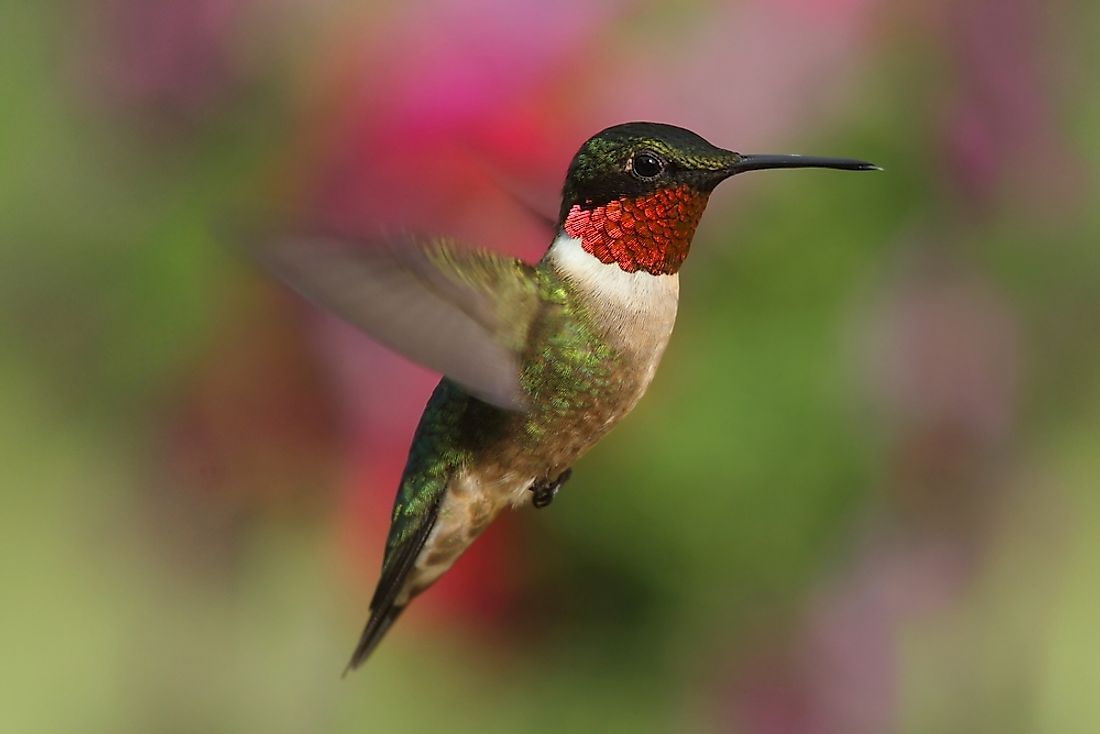Which Animal Has The Fastest Metabolism?

Metabolism is an important chemical process in the body of organisms. Through the process of metabolism, food particles are converted to energy and building blocks and nitrogenous wastes are eliminated. The metabolic processes are catalyzed by enzymes, allowing the organisms to grow, reproduce, and respond to the environment around them. The rate of metabolism differs from one organism to another due to several factors including body size, body composition, age, climate and body temperature, level of hormones, and level of activities. Organisms with higher metabolic rates tend to take in a lot of food than those with slow ones. But which animal has the fastest metabolic rate?
Ruby-throated Hummingbirds
Although Ruby-throated Hummingbirds are the smallest birds on earth, they have the fastest metabolic rate than any other animal. In fact, their rate of metabolism is approximately 100 times that of the elephant. The birds burn food very fast that they need about 3 times their weight in food per day. Because the Ruby-throated Hummingbirds are often eating, they are commonly referred to as “hungry birds.” For them to get more food, the Ruby-throated Hummingbirds move from place to place, especially flowers, every day. The bird can easily die if it goes for one day without eating any food.
The diet of Ruby-throated Hummingbirds comprises mainly of liquid nectar. They consume approximately 3.14-7.6 calories per day. Although the number of calories may seem little but if humans (consuming 3,500 calories a day) had the metabolic rate as the hummingbird, they would consume approximately 150,000 calories per day. That is about 70 times as much as most people eat. The small body size and high rate of heartbeat are responsible for the high-calorie intake in hummingbirds.
Adaptation To Cold Temperature And Insufficient Food Supply
Hummingbirds cannot live for long or survive a day without food. However, the birds have devised a mechanism to help conserve energy in the body during cold weather or when they cannot get sufficient food. The mechanism can help them go for a day or more without food. During the cold season, the birds get into a deep sleep, a state referred to as torpor. During this period, the body temperature may drop about 500 while the heart rate may slow down to less than 50. At this slow heartbeat, breathing may also stop. In fact, the bird appears lifeless in torpor
At torpid state, the energy consumption is reduced by almost 50 times, slowing the high rate of metabolism which can only be sustained by high food consumption. Although torpor benefits the hummingbird, it takes several minutes for the bird to become active again, making it difficult to respond to any emergency.
How Do Hummingbirds Regain Their Active State?
When the heartbeat and the breathing rate increases, the hummingbird will start vibrating its wings. The vibrating wing generates heat which warms the blood supply. The warm blood is circulated throughout the body, thus, raising the body temperature. The bird becomes fully active when the body temperature reaches 102degrees, which is the normal body temperature.











